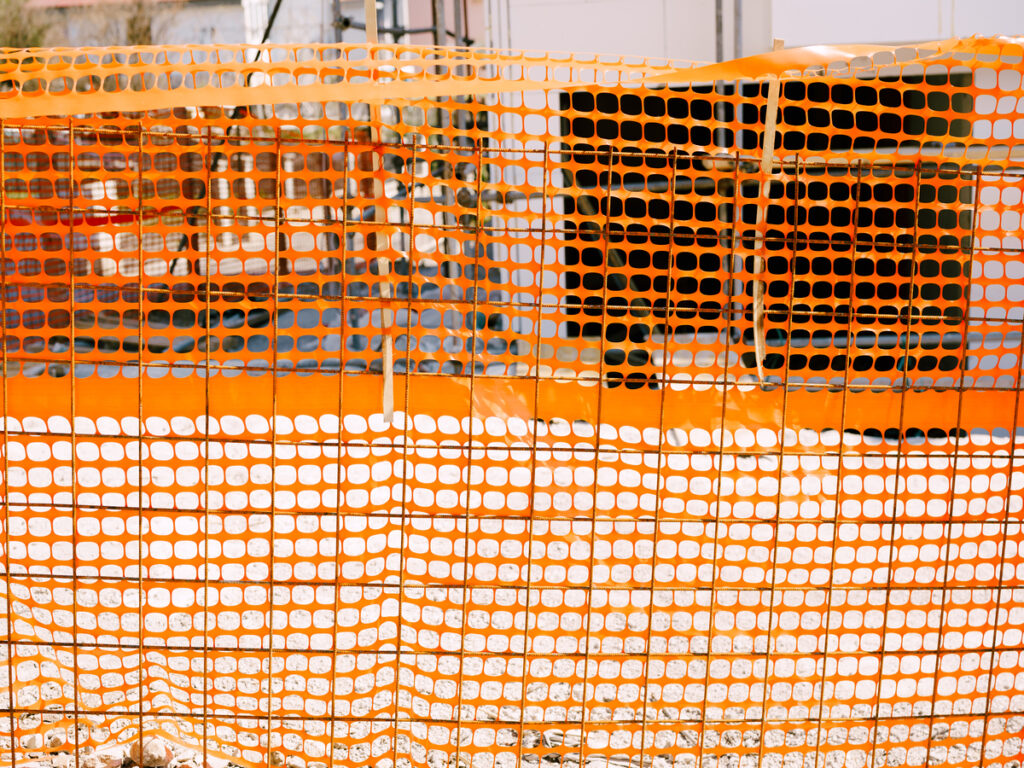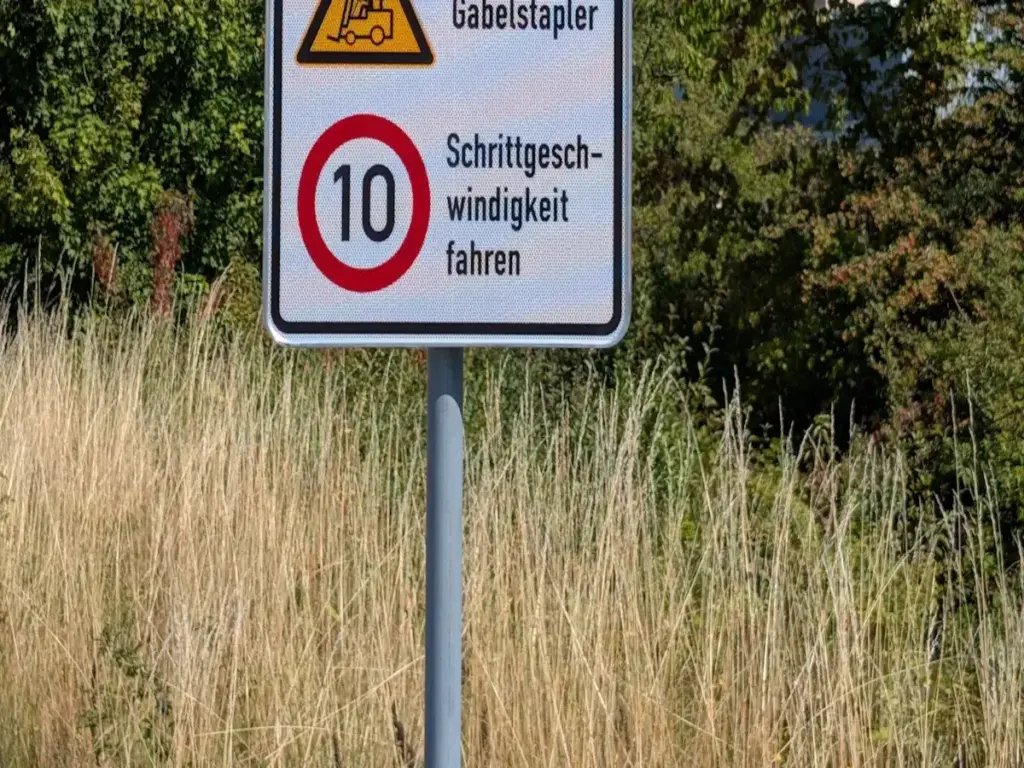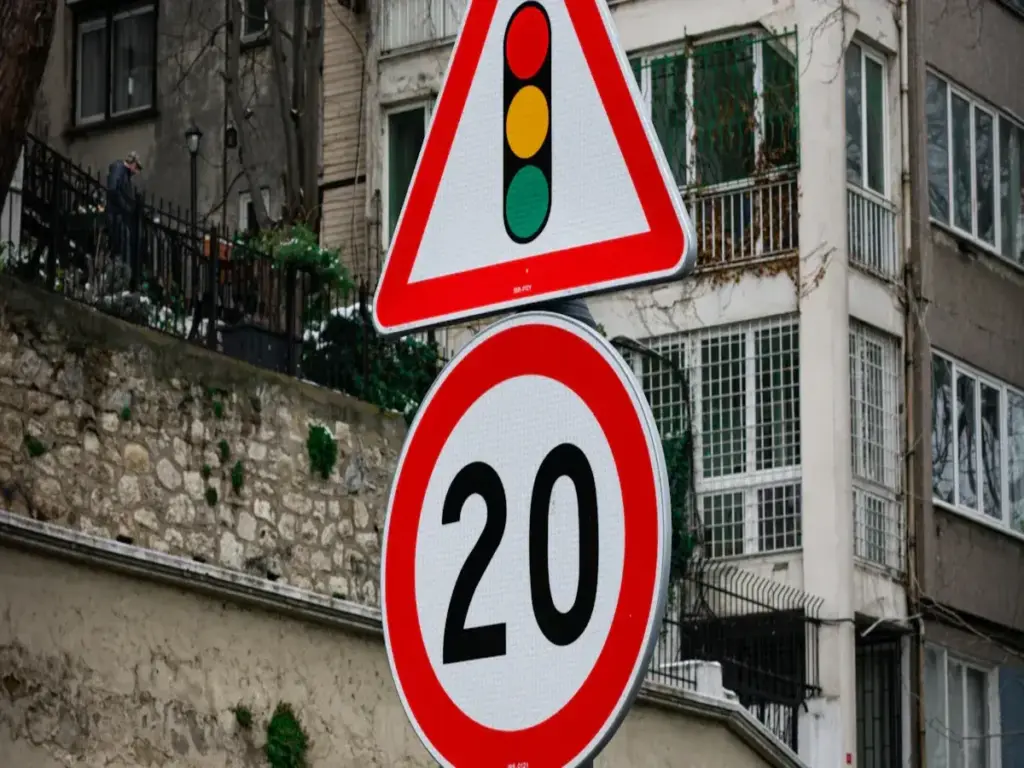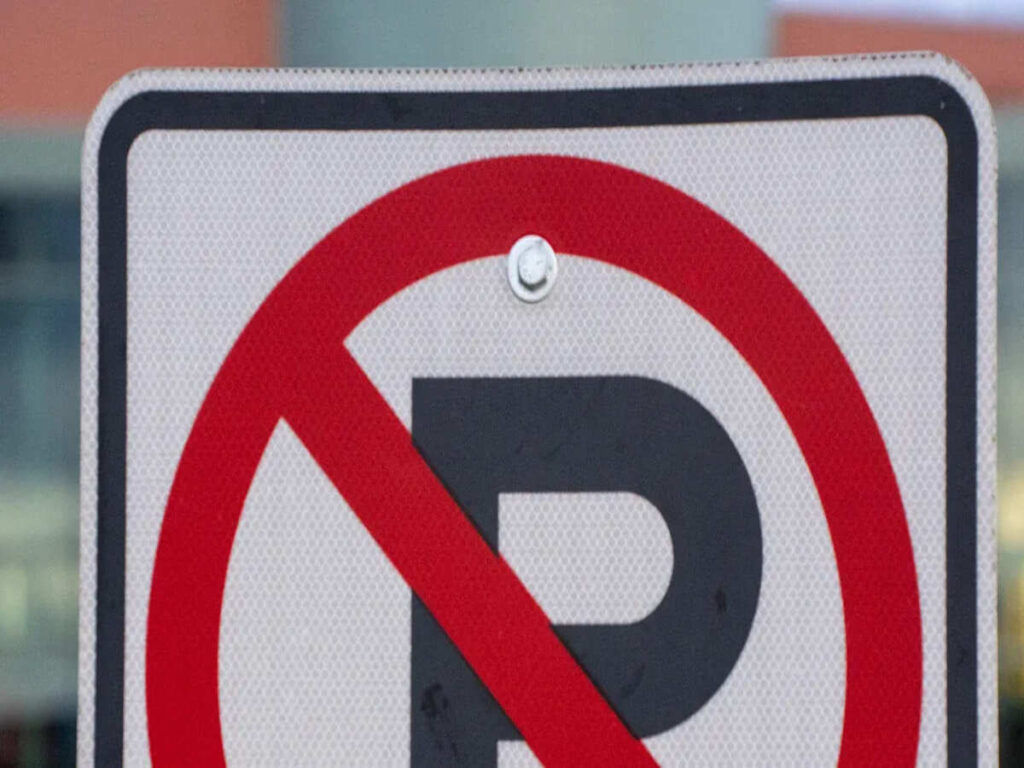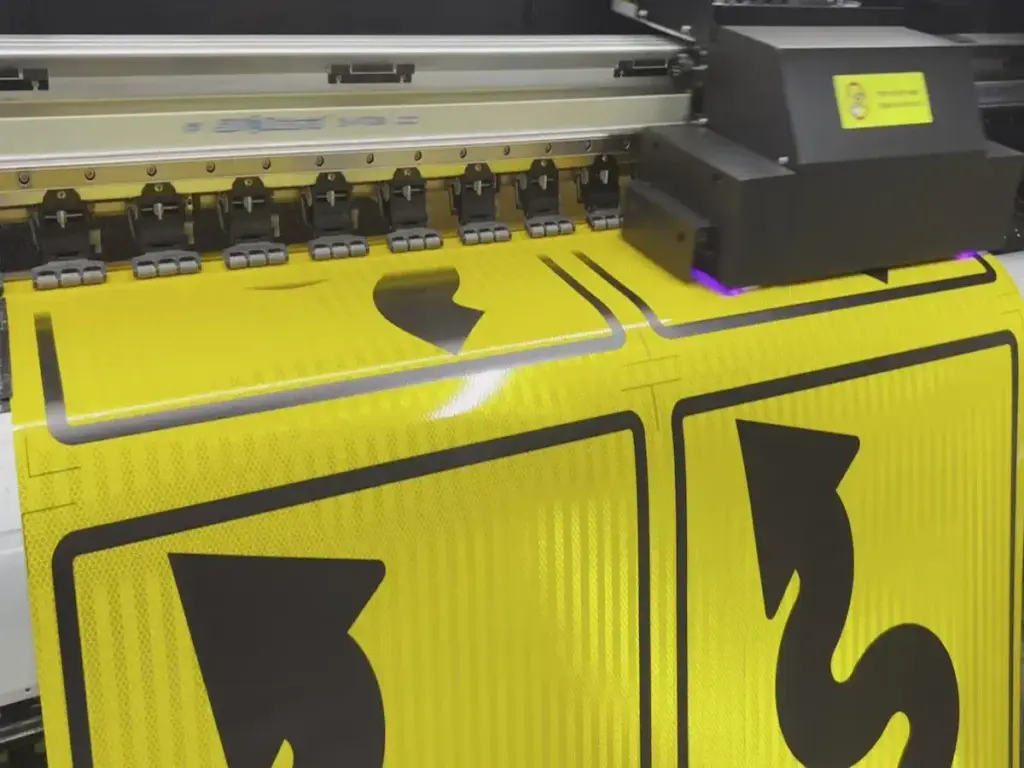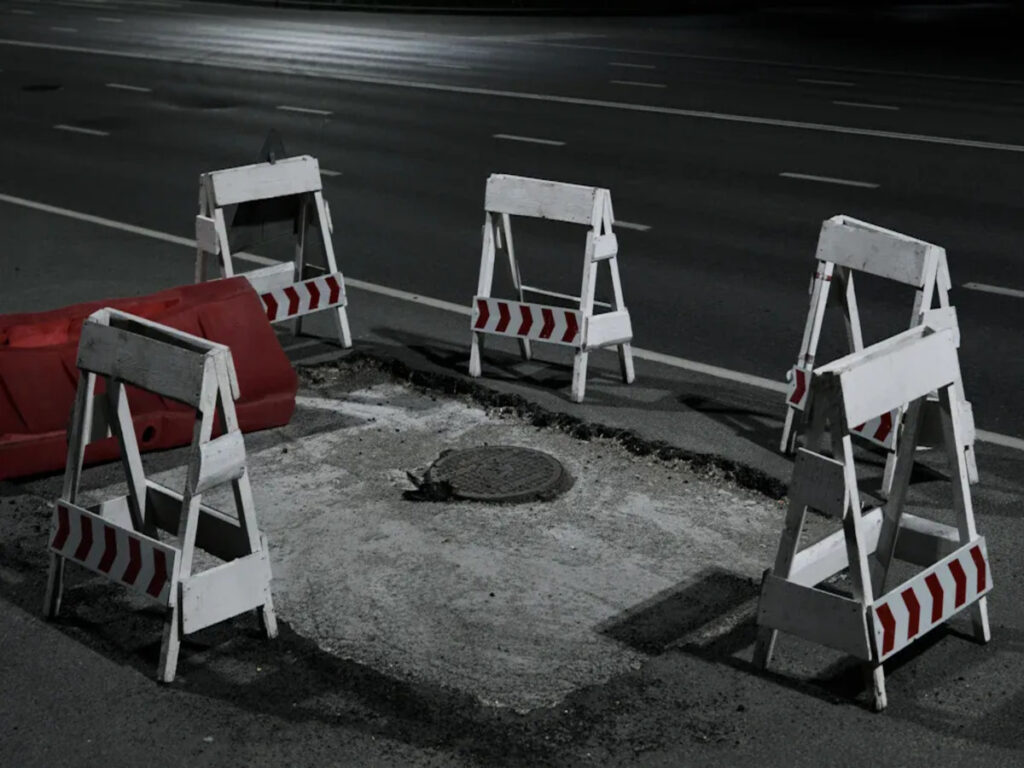
عندما يتعلق الأمر بالسلامة على الطرق, يعد اختيار حبات السلامة المناسبة أمرًا ضروريًا لحماية كل من العمال والسائقين. يكتب 1 ونوع 2 تخدم حبات السلامة أغراض مختلفة وتوفر مستويات مختلفة من الرؤية والمتانة. بينما النوع 1 عادة ما تستخدم المتاريس للمناطق الأقل خطورة مع انخفاض حجم حركة المرور, يكتب 2 تم تصميم المتاريس لأكثر وضوحًا, المناطق ذات الحركة العالية حيث تكون الحماية المعززة مطلوبة. يمكن أن يساعد فهم الاختلافات بين هذين النوعين من حبات الأمان في ضمان اختيار الخيار الأنسب لاحتياجات سلامة الطرق الخاصة بك.
يقدم Optraffic مجموعة من الجودة العالية حبات السلامة, بما في ذلك النوع 1 ونوع 2, مصمم لتلبية أعلى معايير الرؤية, متانة, والأداء. استكشف اختيارنا اليوم لاختيار المتاريس المناسبة لمتطلبات السلامة على الطرق.
نظرة عامة على حبات السلامة
حبات السلامة مهمة للغاية للسلامة على الطرق. إنهم يساعدون السيارات على التحرك بالطريقة الصحيحة. يبقون العمال آمنين ويمنعون الناس من المشي إلى أماكن خطيرة. تشير الدراسات. هذه الحواجز تحمي أيضًا الأشخاص الذين يمشون أو يركبون الدراجات. أنها تساعد على إبطاء السيارات وخفض مخاطر الانهيار. يستخدم نهج النظام الآمن حواجز لإيقاف الإصابات والوفيات. الطرق أكثر أمانًا عندما يكون لديهم أشياء تساعد السائقين على عدم ارتكاب أخطاء.
لمزيد من المعلومات حول اختيار حبات السلامة المناسبة, تحقق من مدونتنا, كل ما تحتاج لمعرفته عن متوجات المرور للبيع.
أنواع حواجز السلامة
هناك العديد من حواجز السلامة في المملكة المتحدة. كل واحد لديه وظيفة خاصة. يمنع البعض الناس من السقوط. يمنع الآخرون السيارات من الذهاب إلى حيث لا ينبغي عليهم ذلك. يسرد الجدول أدناه الأنواع الأكثر شيوعًا وماذا يفعلون:
| أنواع شائعة من حواجز السلامة في المملكة المتحدة | وصف |
|---|---|
| الدرابزين | ضع الممرات أو الأماكن المرتفعة للتوقف عن السقوط. يصنعون حاجزًا عند الارتفاع الصحيح. |
| حماة الأرفف | حافظ على رفوف التخزين في مأمن من شوكية أو آلات أخرى. أنها تساعد الرفوف على البقاء قوية وآمنة. |
| سياج السلامة | يصنع مناطق آمنة حول الآلات أو الأماكن الخطرة. إنه يمنع الناس من الذهاب إلى حيث لا ينبغي عليهم ذلك. |
| السلامة bollards | قصير, الوظائف القوية التي تمنع السيارات من الذهاب إلى أماكن للأشخاص أو الآلات. |
| حواجز السلامة للأبواب | ضعها عند تحميل الأرصفة والأبواب لإيقاف الحوادث والأضرار عند تحريك الأشياء. |
| حواجز المرور | إظهار طرق آمنة للذهاب والحفاظ على الناس والسيارات منفصلة. هذا يساعد على التوقف عن حوادث. |
| حواجز الاصطدام | خذ القوة من حوادث في أماكن محفوفة بالمخاطر مثل الزوايا. يحميون المباني والآلات. |
يكتب 1 ونوع 2 حبات السلامة هي حواجز مرورية. يكتب 1 لديه لوحة عاكسة واحدة ونوع 2 لديه لوحان, لذلك من الأسهل رؤية. يظهر كلا النوعين مسارات آمنة ويحذر السائقين من مناطق العمل أو المخاطر.
الميزات الرئيسية
حواجز السلامة لديها بعض الأشياء المشتركة. وهي مصنوعة من مواد قوية. يمكنهم أن يأخذوا ضربة ولا يكسرون. كثيرون مشرقون أو لديهم لوحات عاكسة, حتى تتمكن من رؤيتهم في الليل. يمكن للبعض أن يأخذ القوة من حادث تحطم للحفاظ على سلامة الناس والسيارات. يعتمد التصميم على المكان الذي سيذهب فيه الحاجز. يجب أن تكون الحواجز على الطرق السريعة أقوى وأسهل من تلك الموجودة في مواقف السيارات. يساعد اختيار الحاجز الصحيح في إيقاف الحوادث ويبقي الجميع آمنين.
يكتب 1 حبات السلامة
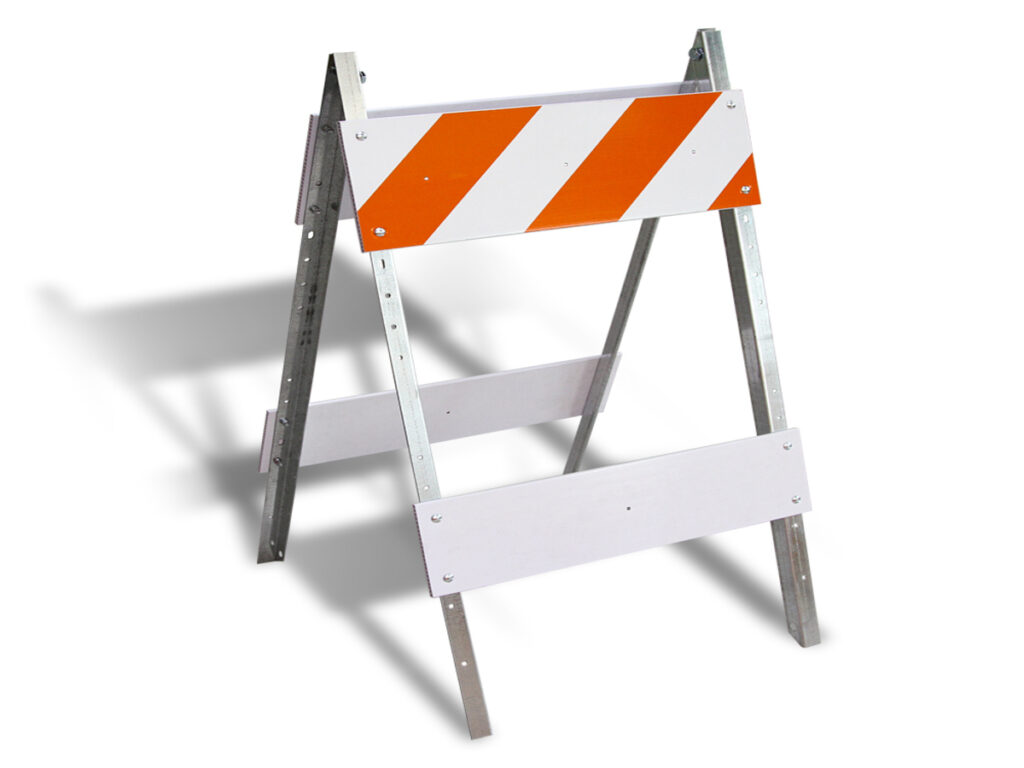
تصميم
يكتب 1 حواجز السلامة لديك شكل إطار A. وهي مصنوعة من البلاستيك, خشب, أو المعدن الرقيق. هذه المواد خفيفة وسهلة التحرك. هناك لوحة عاكسة واحدة على السكة العلوية. تساعد هذه اللوحة الناس على رؤية الحاجز في اليوم. يمكن أن تطوي الإطار, حتى يتمكن العمال من حملها بسهولة. العديد من المجالس مثل هذا التصميم لأنه من السهل التخزين والتحرك.
يستخدم
يكتب 1 حواجز السلامة هي الأفضل للطرق البطيئة والأماكن الهادئة. يستخدمها العمال في شوارع المدينة, في الحدائق, أو للوظائف الصغيرة. تساعد هذه الحواجز على إبقاء السيارات والناس بعيدًا عن الخطر. كما أنها تظهر طرقًا آمنة حول مواقع البناء الصغيرة. تستخدمها المجالس للأحداث أو عندما تتغير الطرق لفترة قصيرة. لأنها خفيفة, يمكن للعمال تحريكهم حسب الحاجة.
إيجابيات وسلبيات
نصيحة: اختر دائمًا الحاجز الصحيح للطريق للبقاء آمنًا.
مزايا النوع 1 حواجز السلامة:
- خفيف وبسيط للحمل
- سريعًا لوضعه وإنزاله
- سعر جيد للوظائف الصغيرة أو القصيرة
- يمكن استخدامها في العديد من الأماكن
عيوب النوع 1 حواجز السلامة:
- لوحة عاكسة واحدة فقط, من الصعب للغاية رؤيتها في الليل أو في الطقس السيئ
- ليست قوية مثل النوع 2 أو اكتب 3
- ليست جيدة للطرق السريعة أو المزدحمة
- لا تحمي العمال أو مستخدمي الطرق بشكل جيد في الأماكن المزدحمة
هنا جدول مع ملخص سريع:
| ميزة | يكتب 1 حواجز السلامة |
|---|---|
| لوحات عاكسة | 1 |
| مادة | البلاستيك, خشب, أو المعدن الرقيق |
| وزن | خفيف الوزن |
| أفضل استخدام | منخفضة السرعة, المناطق المنخفضة الحركة |
| الرؤية | معتدل |
| متانة | أقل من الأنواع الأخرى |
تساعد حبات السلامة على الحفاظ على الطرق ومواقع العمل آمنة. يكتب 1 حواجز السلامة بسيطة ورخيصة للأماكن الأقل خطورة. لكنها لا تعطي ما يكفي من الضوء أو القوة للطرق المزدحمة أو السريعة.
يكتب 2 حبات السلامة
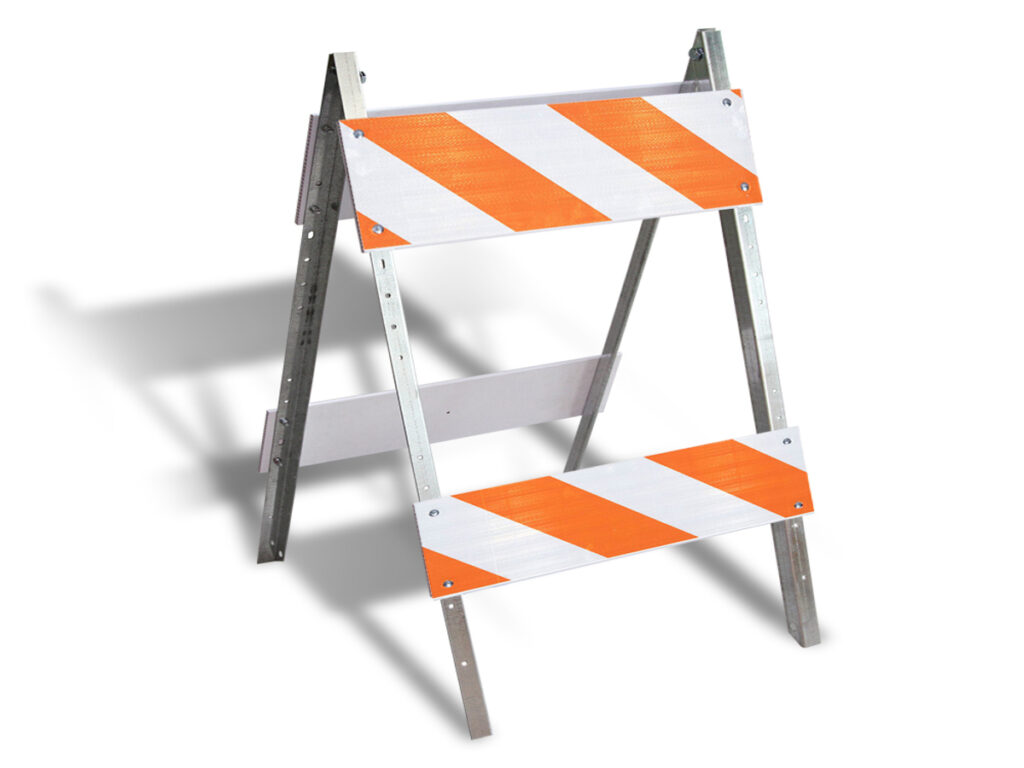
تصميم
يكتب 2 حواجز السلامة لديك لوحتان عاكستان كبيرتان. لوحة واحدة في الأعلى, وواحد في القاع. تستخدم هذه اللوحات أغطية خاصة تتألق بشكل مشرق. يمكنك رؤية الحاجز من بعيد. تناسب اللوحات داخل الإطار, لذلك لا يتم خدشهم. الإطار مصنوع من البلاستيك القوي الذي لا يصدأ. له جداران لقوة إضافية. يمكن أن تطوي الحاجز, حتى يتمكن العمال من حملها بسهولة. بعض الحواجز لها إطارات جوفاء. يمكن للعمال ملءهم بالرمال لجعلهم أثقل وأكثر استقرارًا.
- تساعد لوحتان عاكستين الناس على رؤية الحاجز ليلًا أو نهارًا
- يتم تعيين اللوحات في الإطار لوقف الضرر
- الإطار البلاستيكي ذو الجدار المزدوج يجعله قويًا وصعبًا
- يساعد التصميم القابل للطي في الحركة والتخزين
- الحاجز خفيف, لا يصدأ, ويستمر لفترة طويلة
يستخدم
يكتب 2 حواجز السلامة جيدة للطرق المزدحمة مع سيارات سريعة. يستخدمها العمال عند إصلاح الطرق أو إغلاق الممرات. إنهم يساعدون في توجيه السيارات حول المخاطر والحفاظ على آمنة الناس. هذه الحواجز تحمي أيضًا العمال والأشخاص الذين يمشون بالقرب من حركة المرور. تستخدمها المجالس على الطرق السريعة والطرق السريعة الأخرى. الألواح المشرقة تجعلها سهلة اكتشافها, حتى في الظلام أو المطر. يمكن للعمال التحرك وإعدادهم بسرعة. هذا يساعد عندما تتغير مناطق العمل في كثير من الأحيان.
إيجابيات وسلبيات
ملحوظة: يكتب 2 حواجز السلامة أسهل في رؤيتها وأقوى من النوع 1, لكنها تكلف أكثر وأثقل.
مزايا النوع 2 حواجز السلامة:
- من السهل رؤيته في كل الطقس وفي الليل
- قوي ويستمر لفترة طويلة, حتى لو ضربت
- تطوي, لذلك من السهل التحرك والتخزين
- جيد للطرق المزدحمة والسريعة
عيوب النوع 2 حواجز السلامة:
- أثقل من النوع 1, من الصعب للغاية حملها
- يكلف أكثر من الحواجز البسيطة
- أكبر من الأماكن الصغيرة أو الهادئة
يكتب 2 حواجز السلامة تبقي العمال ومستخدمي الطرق أكثر أمانًا في المناطق المزدحمة. تساعد بنائهم القوية واللوحات المشرقة على إيقاف الحوادث. تختار المجالس وطواقم الطرق هذه المتاريس السلامة هذه للأماكن التي تكون فيها التحذيرات الواضحة مهمة للغاية.
مقارنة أنواع حواجز السلامة
الاختلافات في التصميم
يكتب 1 ونوع 2 تبدو حواجز السلامة على حد سواء. كلاهما لهما شكل إطار A يطوي. يتم ربط الأرجل بمفصلات. صانعو يستخدمون البلاستيك, خشب, أو المعدن الرقيق للإطار. البولي إيثيلين عالي الكثافة شائع لأنه صعب ولا يصدأ. يكتب 1 حواجز السلامة لها لوحة عاكسة واحدة. يكتب 2 حواجز السلامة لها لوحين. لوحة إضافية على النوع 2 يجعلها أثقل وثابتة. كلا النوعين طيوا, لذلك يسهل تخزينها والتحرك. اللوحات عادة 24 بوصة واسعة وتأتي في ارتفاعات مختلفة. يمكن أن تكون الأغطية العاكسة درجة المهندسين, شدة عالية المنشورية, أو درجة الماس. هذا يغير مدى جودة رؤية السائقين الحاجز.
هذه مقارنة جنبًا إلى جنب:
| جانب التصميم | يكتب 1 حاجز | يكتب 2 حاجز |
|---|---|---|
| لوحات عاكسة | لوحة عاكسة واحدة | لوحتان عاكستين |
| مقاس | عادة 24 بوصة واسعة | أكبر من النوع 1 |
| وزن | خفيف الوزن, قابلة للطي | أثقل بسبب لوحة إضافية |
| مواد | البلاستيك, خشب, مقياس رفيع المقياس | البلاستيك, خشب, معدن, البولي إيثيلين عالي الكثافة |
| تصميم | إطار قابل للطي, من السهل التحرك | إطار قابل للطي, أكثر قوة للاستقرار |
| الاستخدام النموذجي | الطرق ذات السرعة المنخفضة, سهل النقل/التخزين | ارتفاع حركة المرور, مناطق سرعة أسرع, الطرق السريعة |
نصيحة: لوحة إضافية على النوع 2 تعطي حواجز السلامة المزيد من القوة وتجعلها أكثر ثباتًا. هذا أفضل للطرق المزدحمة.
الرؤية
ما مدى سهولة رؤية حاجز السلامة أمر مهم للغاية. يكتب 1 حواجز السلامة لها سكة حديد عاكسة واحدة. هذا يعمل بشكل جيد في اليوم أو حيث يوجد ضوء جيد. يكتب 2 حواجز السلامة لها قضبان عاكسة برتقالية. هذه تجعل الحاجز أسهل بكثير, حتى في الليل أو في الطقس السيئ. يستخدم كلا النوعين درجات مختلفة من الأغطية العاكسة. يضيء درجة الماس الأكثر ألمع ويستمر الأطول. يكتب 2 تبرز حواجز السلامة أكثر عندما يكون الظلام. هذا يساعد السائقين على رؤية مناطق العمل عاجلاً.
| ميزة | يكتب 1 حاجز | يكتب 2 حاجز |
|---|---|---|
| قضبان عاكسة | سكة حديد عاكسة واحدة | اثنين من القضبان البرتقالية العاكسة |
| الرؤية | جيد في النهار, منخفضة السرعة, المناطق المنخفضة الحركة | ممتاز في الليل, في المطر, وعلى الطرق المزدحمة |
| استخدام مصابيح الحاجز | غالبًا ما تكون هناك حاجة لليل أو الطقس السيئ | تستخدم لتحذير إضافي في المواقف عالية الخطورة |
ملحوظة: غالبًا ما تضيف المجالس أضواء إلى كلا النوعين من حواجز السلامة لمساعدة السائقين على رؤيتهم في الليل.
متانة
كم من الوقت يدوم حاجز السلامة يعتمد على ما يصنع منه. يكتب 1 تستخدم حواجز السلامة المواد البلاستيكية المرنة التي تنحني ولا تصدأ. يمكنهم أخذ بعض المطبات والعودة إلى شكلهم. يكتب 2 تستخدم حواجز السلامة مواد أقوى ولها جداران. هذا يجعلهم يستمرون لفترة أطول في أماكن مع الكثير من الحوادث. الحواجز المعدنية والخرسانية يمكن أن تصدأ أو تصدع. تدوم الحواجز البلاستيكية لفترة أطول وتحتاج إلى إصلاح أقل. يكتب 1 من السهل إصلاح حواجز السلامة لأنه يمكنك تبديل الأجزاء. يكتب 2 تحتوي حواجز السلامة أيضًا على أجزاء يمكنك تغييرها, لكنها أقوى وتستمر لفترة أطول في الأماكن الصعبة.
| ميزة | يكتب 1: حواجز البوليمر المرنة | يكتب 2: الحواجز المعدنية/البلاستيك |
|---|---|---|
| متانة | مرن, امتصاص الصدمة, مقاوم للتآكل | قوي, جدار مزدوج, أكثر قوة |
| استجابة التأثير | يمتص الآثار, يعود إلى الشكل | يقاوم المزيد من القوة, أقل عرضة للتشوه |
| صيانة | الحد الأدنى, سهل الإصلاح | الحد الأدنى, أجزاء معيارية, خدمة خدمة أطول |
| عمر | منذ فترة طويلة بسبب المرونة والصيانة المنخفضة | أطول في التأثير العالي, البيئات ذات العبور العالية |
التطبيقات النموذجية
تعمل حواجز السلامة المختلفة بشكل أفضل في أماكن مختلفة. يكتب 1 حواجز السلامة جيدة للحدائق, شوارع المدينة, والوظائف الصغيرة. يستخدمها العمال حيث تتحرك السيارات ببطء وهناك خطر أقل. يكتب 2 حواجز السلامة أفضل للطرق المزدحمة والسيارات السريعة. المجالس تستخدمها في أعمال الطرق, إغلاق حارة, وتحديد الطرق السريعة. اللوحة الإضافية والقوة من النوع 2 تساعد حواجز السلامة على الحفاظ على آمنة العمال والسائقين في الأماكن المحفوفة بالمخاطر.
- يكتب 1 حواجز السلامة:
- الحدائق والممرات
- الطرق الحضرية والضواحي منخفضة السرعة
- مواقع البناء الصغيرة
- الأحداث المؤقتة
- يكتب 2 حواجز السلامة:
- الطرق السريعة والطرق السريعة
- عالية السرعة, الطرق العالية
- مشاريع الطقس ليلا أو الفقيرة
- أعمال الطرق الرئيسية وإغلاق الممرات
تختار المجالس والبناة حواجز السلامة المناسبة من خلال النظر إلى سرعة الطريق, كم عدد السيارات الموجودة, ومدى خطورة المكان.
جدول الملخص
| ميزة | يكتب 1 حواجز السلامة | يكتب 2 حواجز السلامة |
|---|---|---|
| لوحات عاكسة | 1 | 2 |
| مواد | البلاستيك, خشب, معدني رفيع | البلاستيك, خشب, معدن, البولي ايثيلين عالي الكثافة |
| مقاس | 24 بوصة واسعة | أكبر, أكثر قوة |
| وزن | خفيف الوزن | أثقل, أكثر استقرارًا |
| الرؤية | معتدل | عالي, خاصة في الليل |
| متانة | جيد للاستخدام الخفيف | ممتاز للاستخدام الكثيف |
| الاستخدام النموذجي | منخفضة السرعة, المناطق المنخفضة الحركة | عالية السرعة, المناطق المرتفعة |
إن اختيار حواجز السلامة المناسبة يجعل الجميع آمنين ويتأكد من أن وظائف الطرق تتبع القواعد.
اللوائح والمعايير
متطلبات المملكة المتحدة
المملكة المتحدة لديها قواعد واضحة لحواجز السلامة على الطرق. تساعد هذه القواعد المجالس والعمال في اختيار الحاجز الصحيح لكل وظيفة. ال قسم النقل و الطرق السريعة إنجلترا استخدم معايير حاجز السلامة التي تتبع أفضل الممارسات في العالم. يقدم دليل الشوارع و Signs Signs Manual نصيحة بشأن استخدام حواجز السلامة في أعمال الطرق والأماكن العامة.
يجب أن تحتوي معظم حواجز السلامة على لوحات عاكسة حتى يتمكن السائقون من رؤيتهم في جميع الأوقات. عدد ومكان هذه اللوحات مهم. يكتب 1 تحتاج حواجز السلامة إلى لوحة عاكسة واحدة على كل جانب. يكتب 2 تحتاج حواجز السلامة إلى لوحين عاكستين على كل جانب. هذه القواعد مثل دليل على أجهزة مراقبة حركة المرور الموحدة (Mutcd), التي تستخدمها العديد من مجالس المملكة المتحدة لسلامة منطقة العمل.
يجب على المجالس التأكد من أن جميع حواجز السلامة تلبي أحدث معايير حاجز السلامة قبل وضعها على الطرق العامة.
متى تستخدم كل نوع
الانتقاء بين النوع 1 ونوع 2 تعتمد حواجز السلامة على الوظيفة والمخاطر. تساعد القواعد العمال على اختيار الحاجز الأكثر أمانًا لكل مكان.
- يكتب 1 حواجز السلامة:
- لديك لوحة عاكسة واحدة.
- الأفضل للطرق البطيئة مع القليل من حركة المرور.
- جيد للوظائف القصيرة أو الصغيرة.
- إعطاء الرؤية الأساسية.
- يكتب 2 حواجز السلامة:
- لديك لوحتان عاكستين لتحسين الرؤية.
- جيد لمناطق العمل المتوسطة, مثل بناء النهار أو طرق المدينة.
- من السهل رؤيته في الليل أو في الطقس السيئ.
- أفضل للأماكن التي تحتوي على المزيد من السيارات أو السرعة الأسرع.
عدد اللوحات العاكسة مهمة للغاية في هذه القواعد. يكتب 1 حواجز السلامة بسيطة, وظائف منخفضة المخاطر. يكتب 2 حواجز السلامة مخصصة للأماكن التي يجب أن يرى فيها السائقون الحاجز من بعيد, مثل الطرق المزدحمة أو العمل الليلي. يجب على المجالس والعمال دائمًا اتباع هذه القواعد للحفاظ على آمنة الجميع.
اختيار حبات السلامة
ظروف الطريق
تعتبر ظروف الطريق مهمة جدًا عند اختيار حاجز السلامة. يكتب 1 الحواجز لديها لوحة عاكسة واحدة. إنها جيدة للشوارع الهادئة, الحدائق, وبطء حركة المرور. يكتب 2 الحواجز لها لوحتان عاكستين. إنهم يعملون بشكل أفضل على الطرق المزدحمة أو الأماكن سريعة الحركة. المزيد من اللوحات العاكسة تجعل الرؤية أسهل في الرؤية. يمكن للسائقين والأشخاص الذين يمشونهم اكتشافهم من بعيد. كلا النوعين مصنوعان من البلاستيك أو الخشب. هذا يجعلها خفيفة وبسيطة للتحرك. يجب عليك اختيار الحاجز الذي يناسب احتياجات الموقع. فكر في عدد السيارات التي تمر بها ومدى سهولة رؤية المنطقة في النهار أو في الليل.
نصيحة: انظر دائمًا إلى المنطقة قبل اختيار حاجز. مبتل, مظلم, أو الأماكن المزدحمة تحتاج إلى حواجز أقوى وأكثر إشراقًا.
حجم المشروع
يساعدك حجم الوظيفة على اختيار الحاجز الصحيح.
- وظائف صغيرة أو قصيرة تستخدم الضوء, المتاريس سهلة الحمل مثل أشكال الإطار A. هذه جيدة لأعمال الطرق المحلية أو المسارات الصغيرة للناس.
- الوظائف الكبيرة أو الطويلة تحتاج إلى حواجز أقوى, مثل المليئة بالماء أو الخرسانة. هذه يمكن أن تأخذ ضربات وسوء الأحوال الجوية.
- الوظائف مع الكثير من الأشخاص الذين يمشون بحاجة إلى حواجز تجعل مسارات آمنة, مثل البلاستيك أو الفينيل.
- للوظائف الطويلة, مواد قوية مثل الخرسانة أو المعدن تدوم لفترة أطول وتحتاج إلى إصلاح أقل.
يمكن أن يساعدك الجدول على رؤية الخيارات:
| حجم المشروع | نوع الحاجز الموصى به |
|---|---|
| صغيرة/قصيرة الأجل | خفيفة الوزن A-Frame, البلاستيك, خشب |
| كبيرة/طويلة الأجل | مليئة بالماء, أسمنت, معدن |
احتياجات السلامة
احتياجات السلامة هي أهم شيء يجب التفكير فيه. إذا كنت تعمل في الليل أو عندما يكون من الصعب رؤيته, استخدم الحواجز بألوان زاهية و شريط عاكس. أضواء الحاجز, مثل الوامضة أو المصابيح الثابتة, مساعدة السائقين والناس على رؤية الأخطار. للأشخاص يمشون, استخدم حواجز مستقرة ومشرقة لإرشادهم بأمان. الحواجز الشاقة, مثل الخرسانة, حماية ضد السيارات في الأماكن المحفوفة بالمخاطر. إذا كنت لا تفكر في السلامة, يمكنك اختيار حاجز يصعب رؤيته أو لا يتبع القواعد.
ملحوظة: اتبع دائمًا قواعد السلامة وخطة لمخاطر كل وظيفة. اسأل الخبراء واختبار المعدات قبل استخدامها لوقف الأخطاء.
يكتب 1 ونوع 2 حبات السلامة ليست هي نفسها. يكتب 1 لديه لوحة عاكسة واحدة. إنه يعمل بشكل أفضل على الطرق الهادئة. يكتب 2 لديه لوحان. من الأفضل للأماكن المزدحمة أو المظلمة. يقول الخبراء إن كلا النوعين يحذرون السائقين ولكن لا توقفان السيارات. اختيار الحاجز الصحيح يجعل الطرق أكثر أمانًا. يوضح الجدول أدناه كيف يمكن للحاجز الأيمن أن يقلل من الإصابات والتعطل القاتل:
| نوع الحاجز | الحد من مخاطر الإصابة | تقليل الانهيار المميت | مثال في العالم الحقيقي |
|---|---|---|---|
| الحواجز الخرسانية | 39% | ن/أ | تستخدم على الطرق السريعة والجسور |
| الدرابزين | 65% | ن/أ | وضع على الانحناءات والمنحدرات |
| الحواجز المتوسطة الكابل | 78-85% | 20% | قطعت Minnesota Dot حوادث مميتة على الطرق السريعة المنقسمة |
اختيار الحاجز الصحيح يبقي الطرق آمنة ويتبع قواعد السلامة.
التعليمات
ما هو الفرق الرئيسي بين النوع 1 ونوع 2 حبات السلامة?
يكتب 1 حبات السلامة لديها لوحة عاكسة واحدة. يكتب 2 حبات السلامة لها لوحتان عاكستين. لوحة إضافية على النوع 2 يسهل رؤيته. هذا يساعد السائقين على اكتشافهم على طرق مزدحمة أو سريعة.
يمكن الكتابة 1 يتم استخدام المتاريس على الطرق السريعة?
يكتب 1 المتاريس ليست مناسبة للطرق السريعة. هم الأفضل للطرق الهادئة أو حركة المرور البطيئة. تحتاج الطرق السريعة إلى حواجز أقوى وأسهل في الرؤية. يكتب 2 الحواجز تعمل بشكل أفضل لهذه الأماكن.
نوع 2 حبات السلامة قابلة لإعادة الاستخدام?
نعم, يمكن للعمال استخدام النوع 2 حاجز السلامة مرة أخرى. وهي مصنوعة من مواد قوية وتطوي بسهولة. هذا يجعلها بسيطة للتحرك وتخزينها. غالبًا ما يحافظ التحقق منها على آمنة للعديد من الوظائف.
هل يتطلب كلا النوعين من الحواجز أضواء في الليل?
غالبًا ما يحتاج كلا النوعين إلى أضواء في الليل أو في الطقس السيئ. تساعد الأنوار السائقين والأشخاص الذين يمشون يرون المتاريس من بعيد. تضيف المجالس أضواء لجعل مناطق عمل أكثر أمانًا.
كيف يختار العمال حاجز السلامة المناسب?
يفكر العمال في سرعة الطريق, كم هو مشغول, وما مدى سهولة رؤيته. يستخدمون النوع 1 لأماكن هادئة. يستخدمون النوع 2 للأماكن المزدحمة أو المظلمة. اتباع قواعد السلامة تبقي الجميع آمنين بالقرب من الطريق.

